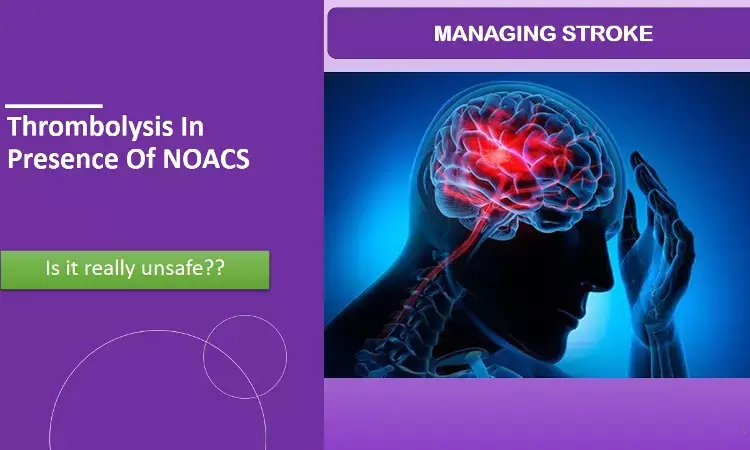- Home
- Medical news & Guidelines
- Anesthesiology
- Cardiology and CTVS
- Critical Care
- Dentistry
- Dermatology
- Diabetes and Endocrinology
- ENT
- Gastroenterology
- Medicine
- Nephrology
- Neurology
- Obstretics-Gynaecology
- Oncology
- Ophthalmology
- Orthopaedics
- Pediatrics-Neonatology
- Psychiatry
- Pulmonology
- Radiology
- Surgery
- Urology
- Laboratory Medicine
- Diet
- Nursing
- Paramedical
- Physiotherapy
- Health news
- Fact Check
- Bone Health Fact Check
- Brain Health Fact Check
- Cancer Related Fact Check
- Child Care Fact Check
- Dental and oral health fact check
- Diabetes and metabolic health fact check
- Diet and Nutrition Fact Check
- Eye and ENT Care Fact Check
- Fitness fact check
- Gut health fact check
- Heart health fact check
- Kidney health fact check
- Medical education fact check
- Men's health fact check
- Respiratory fact check
- Skin and hair care fact check
- Vaccine and Immunization fact check
- Women's health fact check
- AYUSH
- State News
- Andaman and Nicobar Islands
- Andhra Pradesh
- Arunachal Pradesh
- Assam
- Bihar
- Chandigarh
- Chattisgarh
- Dadra and Nagar Haveli
- Daman and Diu
- Delhi
- Goa
- Gujarat
- Haryana
- Himachal Pradesh
- Jammu & Kashmir
- Jharkhand
- Karnataka
- Kerala
- Ladakh
- Lakshadweep
- Madhya Pradesh
- Maharashtra
- Manipur
- Meghalaya
- Mizoram
- Nagaland
- Odisha
- Puducherry
- Punjab
- Rajasthan
- Sikkim
- Tamil Nadu
- Telangana
- Tripura
- Uttar Pradesh
- Uttrakhand
- West Bengal
- Medical Education
- Industry
Recent NOAC use does not increase ICH risk in stroke patients undergoing thrombolysis: JAMA study

Contrary to the guidelines that recommend against use of intravenous alteplase in patients with acute ischemic stroke who are taking non–vitamin K antagonist oral anticoagulants (NOACs), authors Kam et al have shown that thrombolysis in the setting of recent NOAC use is not associated with a significantly increased risk of intracranial hemorrhage.
Alteplase is often withheld in patients with acute ischemic stroke who have taken NOAC therapy and these patients may be deprived of the potential beneficial effects of thrombolytic therapy. Thus, counterintuitively, patients receiving NOAC therapy may be penalized for being adherent with their prescribed therapy when they experience a breakthrough stroke that otherwise would be eligible for alteplase therapy.
A report from 2014 indicates that such breakthrough strokes occur at the rate of 1% per yaer in patients on NOACs.
Addressing this issue, Kam et al report important data that will help to define the safety of intravenous alteplase among patients taking NOACs. The authors used AHA/ASA Get With The Guidelines–Stroke registry data and identified 163 038 patients with acute ischemic stroke.
The primary outcome was symptomatic intracranial hemorrhage occurring within 36 hours after intravenous alteplase administration. There were 4 secondary safety outcomes, including inpatient mortality, and 7 secondary functional outcomes assessed at hospital discharge, including the proportion of patients discharged home.
Among these patients who all received alteplase, 2207 had taken a NOAC within the previous 7 days before stroke onset and alteplase treatment. The rate of symptomatic intracranial hemorrhage was 3.7% among patients taking NOACs compared with 3.2% among patients not taking any anticoagulants, with no statistically significant difference between groups.
Additional analyses showed no significant differences in inpatient and 4 of the 7 secondary functional outcomes showed significant differences in favor of the NOAC group after adjustment.
"Compared with patients not taking any anticoagulants, patients taking NOACs were significantly more likely to be discharged home, ambulate independently, and have less global disability at discharge" note authors.
Two major conclusions can be drawn from this study. First, the use of intravenous alteplase in patients with ischemic stroke and prior NOAC intake within 7 potentially appears to be safe.
Second, less than 9% of patients taking NOACs but otherwise potentially eligible for alteplase therapy received this treatment. This underscores the significance of this data to shape future trials that can further clarify the issue of NOAC safety so that all eligible patients do not miss the vital thrombolytic therapy.
Source: JAMA Cardiology : doi:10.1001/jama.2022.0948
MBBS, MD , DM Cardiology
Dr Abhimanyu Uppal completed his M. B. B. S and M. D. in internal medicine from the SMS Medical College in Jaipur. He got selected for D. M. Cardiology course in the prestigious G. B. Pant Institute, New Delhi in 2017. After completing his D. M. Degree he continues to work as Post DM senior resident in G. B. pant hospital. He is actively involved in various research activities of the department and has assisted and performed a multitude of cardiac procedures under the guidance of esteemed faculty of this Institute. He can be contacted at editorial@medicaldialogues.in.
Dr Kamal Kant Kohli-MBBS, DTCD- a chest specialist with more than 30 years of practice and a flair for writing clinical articles, Dr Kamal Kant Kohli joined Medical Dialogues as a Chief Editor of Medical News. Besides writing articles, as an editor, he proofreads and verifies all the medical content published on Medical Dialogues including those coming from journals, studies,medical conferences,guidelines etc. Email: drkohli@medicaldialogues.in. Contact no. 011-43720751


